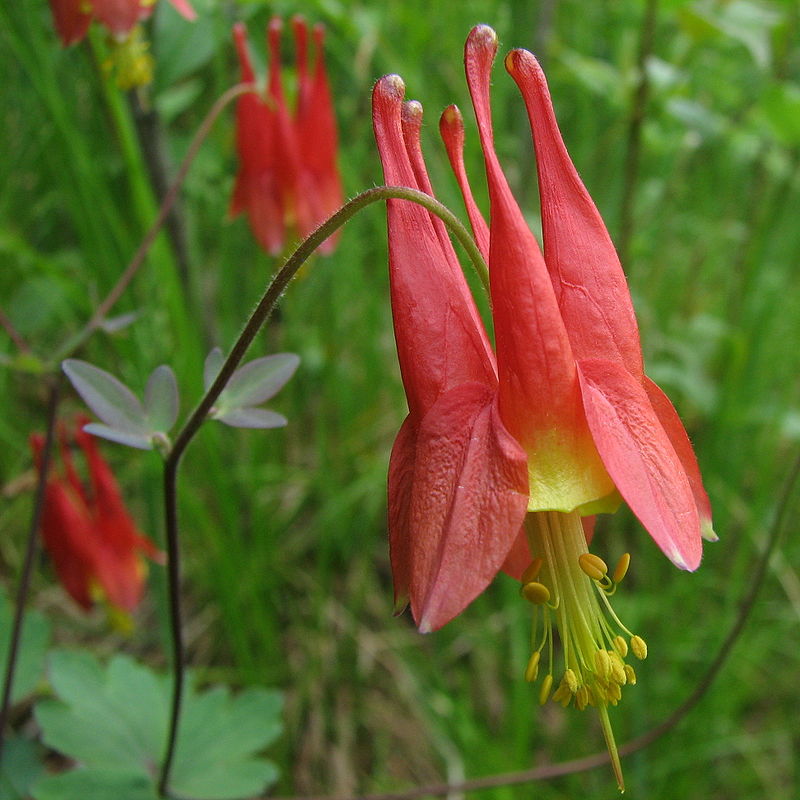Long before the term “Columbine” was shorthand for a terrible disaster, it meant a town, it meant the sweetheart of Harlequin in pantomime, and it was the name of a flower. Right now, wild columbines (Aquilegia canadensis), are sprinkled about our local rocky outcroppings, their bright red and yellow flowers nodding. These spectacular flowers are worth a closer look. The 60 or 70 species of columbines are in the genus Aquilegia, whose name comes from the Latin for eagle, because the petals of this oddly shaped flower looked to observers like an eagle’s claw.
The sepals, another part of the flower, look like wings next to the recurved spurs of the petals. The flower itself hangs upside down. To people in the Middle Ages, these jutting wings made the flower look like a group of doves rising upward, and thus the common name, columbine, comes from the Medieval Latin columbīna (herba) dovelike (plant).
These flocks of doves, these eagle talons, provide nectar for their long-tongued pollinators such as hummingbirds, butterflies, and bees. Such pollinators desperately need food sources, and the columbine are a perfect supplier.
Native Americans used various parts of the columbine to treat ailments as diverse as heart disease, bladder problems, headaches and kidney problems. Seeds were ground to make a love charm.
Wild columbines are flowering now and will later produce seeds from August until October, but they are perennials and will overwinter as well.The flowers of the wild columbine, join the tulip poplars, azaleas, and other local showy spring plants to bring sparks of color to this spring festival.
Enjoy!



